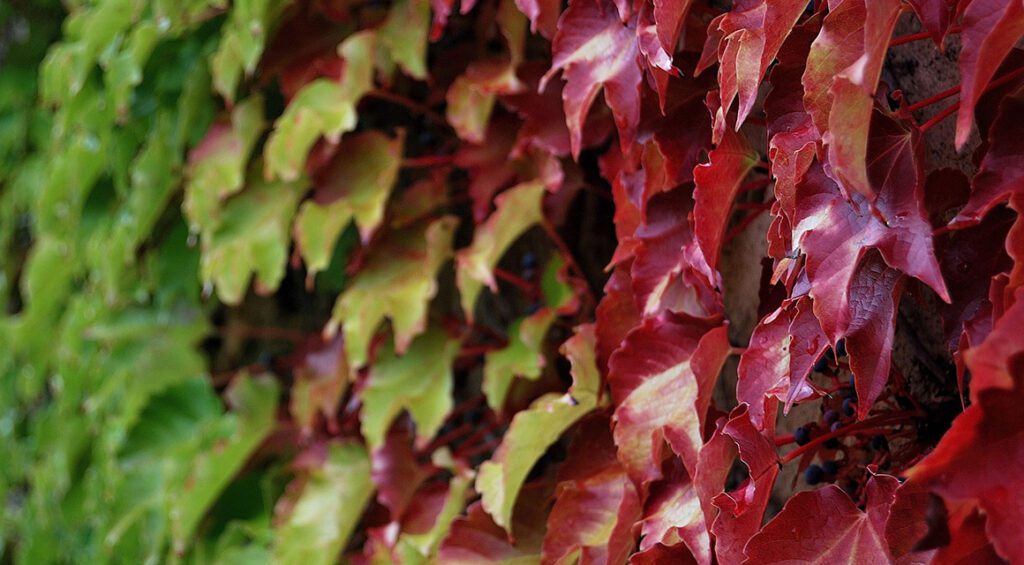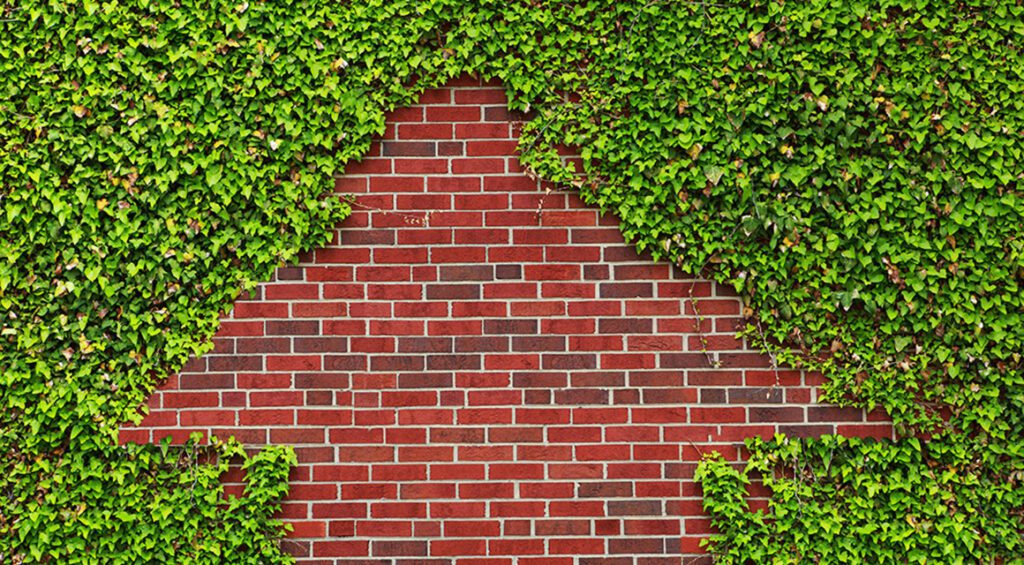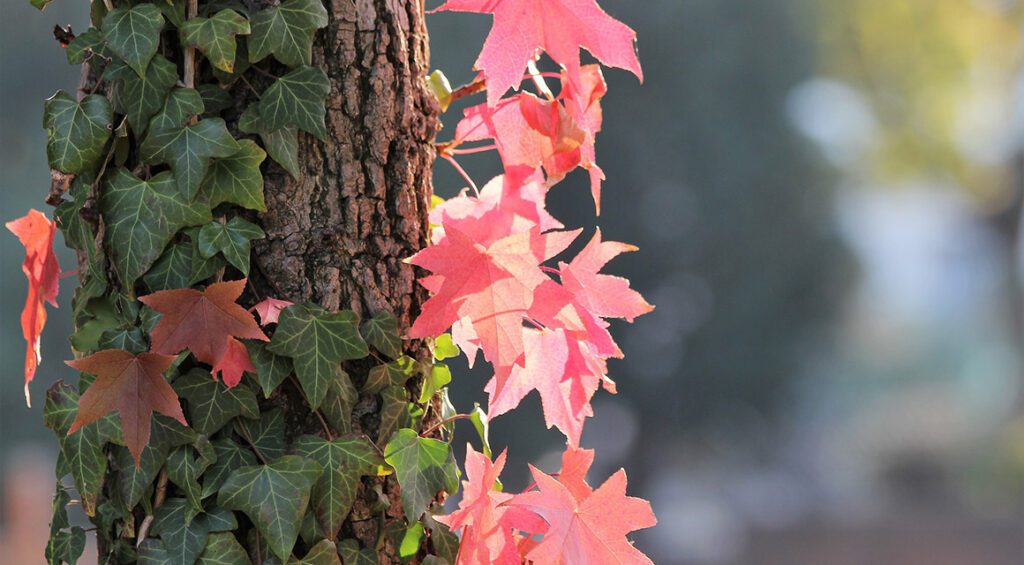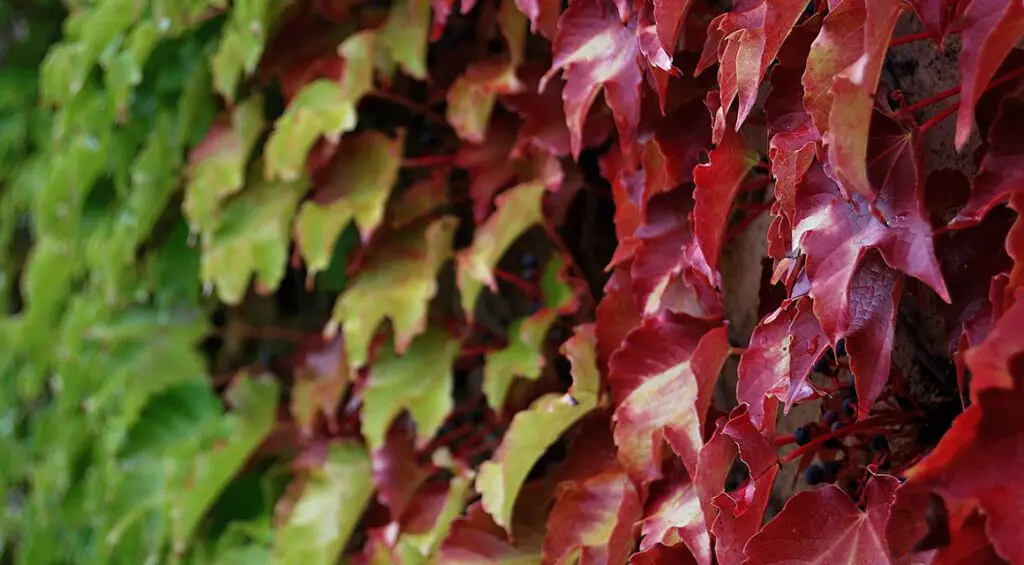Yes, you can create a hedge with ivy (Hedera). Ivy is a versatile and attractive plant that can be used to form a dense, evergreen hedge. However, there are some important considerations and steps to keep in mind when using ivy for this purpose:
Contents
Selecting the Right Ivy Variety:
- English Ivy (Hedera helix): English ivy is a popular choice for hedging. It has lush, dark green leaves and is known for its climbing and spreading abilities. When properly managed, it can make a dense and attractive hedge.
- Algerian Ivy (Hedera canariensis): Algerian ivy is another variety suitable for hedging. It has larger, glossy leaves and a more robust growth habit, making it an excellent choice for creating a substantial green wall.
Steps to Create an Ivy Hedge:
- Choose a Suitable Location: Select a location with the right amount of sunlight and well-drained soil. Ivy can thrive in both sun and shade, but it’s important to ensure the chosen spot provides the necessary conditions for healthy growth.
- Prepare the Soil: Ivy prefers fertile, loamy soil. Ensure the soil is well-drained to prevent waterlogged conditions, which ivy doesn’t tolerate well.
- Planting Ivy: Plant ivy in a straight line or desired pattern to create a hedge. Space individual plants at intervals of about 12 to 18 inches (30 to 45 cm) apart, depending on the variety and your desired hedge density.
- Provide Adequate Water: Water newly planted ivy regularly to help it establish a strong root system. Once established, ivy is relatively drought-tolerant.
- Mulch and Fertilize: Apply a layer of mulch around the base of the ivy plants to help conserve moisture and suppress weeds. You can also fertilize ivy in the spring with a balanced, slow-release fertilizer to promote healthy growth.
- Training and Pruning: Ivy can grow aggressively, so it’s important to train and prune it regularly to maintain the desired hedge shape and density. Pruning should be done in early spring or late winter before new growth begins.
- Support Structure: Ivy may require some form of support structure, especially in the early stages of growth. You can use trellises, wires, or other supportive structures to guide the ivy as it forms a hedge.
Tips and Considerations:
- Ivy can be an aggressive grower, so it’s essential to manage its growth by pruning and maintaining the desired shape. Without proper maintenance, ivy can become invasive and overtake other plants and structures.
- While ivy is generally low-maintenance, it may be susceptible to certain pests and diseases, so regular inspection and care are necessary.
- Ivy can provide habitat and food for wildlife, such as birds and insects, and it can contribute to biodiversity in your garden.
- Be aware that some ivy varieties may be considered invasive in certain regions. It’s important to check local regulations and guidelines regarding the use of ivy as a hedge to prevent unintended ecological consequences.
- Ivy can be used to create both formal and informal hedges, depending on your preferences and the way you prune and shape the plants.

How does my Hedera grow as a hedge?
Unlike most other plants, the Hedera has two different types of roots. First and foremost, of course, it has roots that grow in the ground, which is familiar from other plants. But in addition, it has adhesive roots that can attach to a surface, such as walls or tree trunks. But also on wooden, metal or bamboo scaffolding the Hedera can climb up wonderfully, if you fix it at some points of the scaffolding. These fixing points should then have a distance of about 20 centimeters between each other, so that they are not too close together. But how fast can an ivy actually grow?
If you do not know exactly whether you can fix the Hedera to a certain surface, then that is also not a problem. In fact, at Hedgeplantsdirect.com we also sell prefabricated hedges. A prefabricated hedge of ivy plants then already tied to a 1.80 meter high and 1.00 meter wide frame. This is a little more expensive, but it is time-saving and absolutely uncomplicated. However, the time factor is somewhat less crucial with ivy than with most other hedge plants. Indeed, the common ivy (Hedera helix) and the Irish ivy (Hedera hibernica) have a particularly fast growth: a growth of 0.5 meters per year is quite possible.

Especially narrow privacy hedges possible with the Hedera.
The disadvantage of a good privacy hedge, however, is that as it grows taller, it then requires more and more space in width. Even relatively narrow hedge plants need a little more space in the garden, such as the cherry laurel ‘Genolia’®, the mock cypress and the tree of life, also known as Thuja. If there is a shortage of space in the garden, then many garden owners usually think that a fence is the only option to get more privacy in the garden. However, it can be done quite differently and much better. In fact, the Hedera hardly takes up any space when it comes to width. Narrower hedges do not really exist.
Moreover, the Hedera is evergreen. Its thick, leathery leaves will stick to this strong plant all year round. And the leaves have some ornamental value as well. Because of their sheen, they can easily be compared to cherry laurel leaves. The leaves of Irish ivy are slightly darker than the leaves of a common ivy. So you can base your selection on the matching leaves, because otherwise these two ivy varieties have pretty similar identifying characteristics. The greenish-yellow flowers are quite striking in color and size, but then again the dark purple to black Hedera berries are readily eaten by birds in the winter.

Does a Hedera hedge actually have disadvantages?
The advantages of a Hedera hedge make this evergreen hedge plant a very special plant, but does an ivy hedge actually have any disadvantages? In nature, you can already see one obvious disadvantage for yourself. The Hedera grows and grows, and it does not mind if other plants are in the way or not. The ivy then simply grows over these plants. That is why the Hedera is often used as a ground cover. Fortunately, you can also avoid this fairly easily by cutting back the ivy hedge in a timely manner. This should be done at least twice a year.
With many other hedge plants, you should wait until it is the right time to prune them back. Usually this is between May and September. However, this does not apply to a Hedera because this plant is never in winter dormancy. You can prune a Hedera hedge as always. So, if you think that the compact leaves of your ivy hedge are already much too close to other garden plants, you do not need to wait for the frost to pass. So, they can cut off the branches in question immediately. By the way, cutting ivy hedge or prefabricated hedge is quite simple.

Hedera is a simple, robust hedge plant.
More and more garden owners are convinced of the ivy hedge. This is quite understandable, because this plant variety has quite unique properties. In addition, there is also the fact that the Hedera hardly imposes any conditions on its environment. However, a loose, slightly moist soil and a location in the shade are particularly ideal, but dry soil and a location in the sun are also possible. However, if your ivy hedge is in a windy location then there is a risk that the ivy may suffer damage from a severe frost. However, even from frost damage, the ivy will recover quickly.
However, if everything is to go much faster, then we also have ready-made hedges of ivy in our assortment, but even with young ivy plants you can already reach your goal pretty quickly. You should then plan for five plants per meter. Do you prefer a narrow hedge that blooms a little more lushly? Then take a closer look at the wonderful climbing hydrangea. However, the climbing hydrangea is not evergreen and therefore it is rather not suitable as a privacy hedge.


